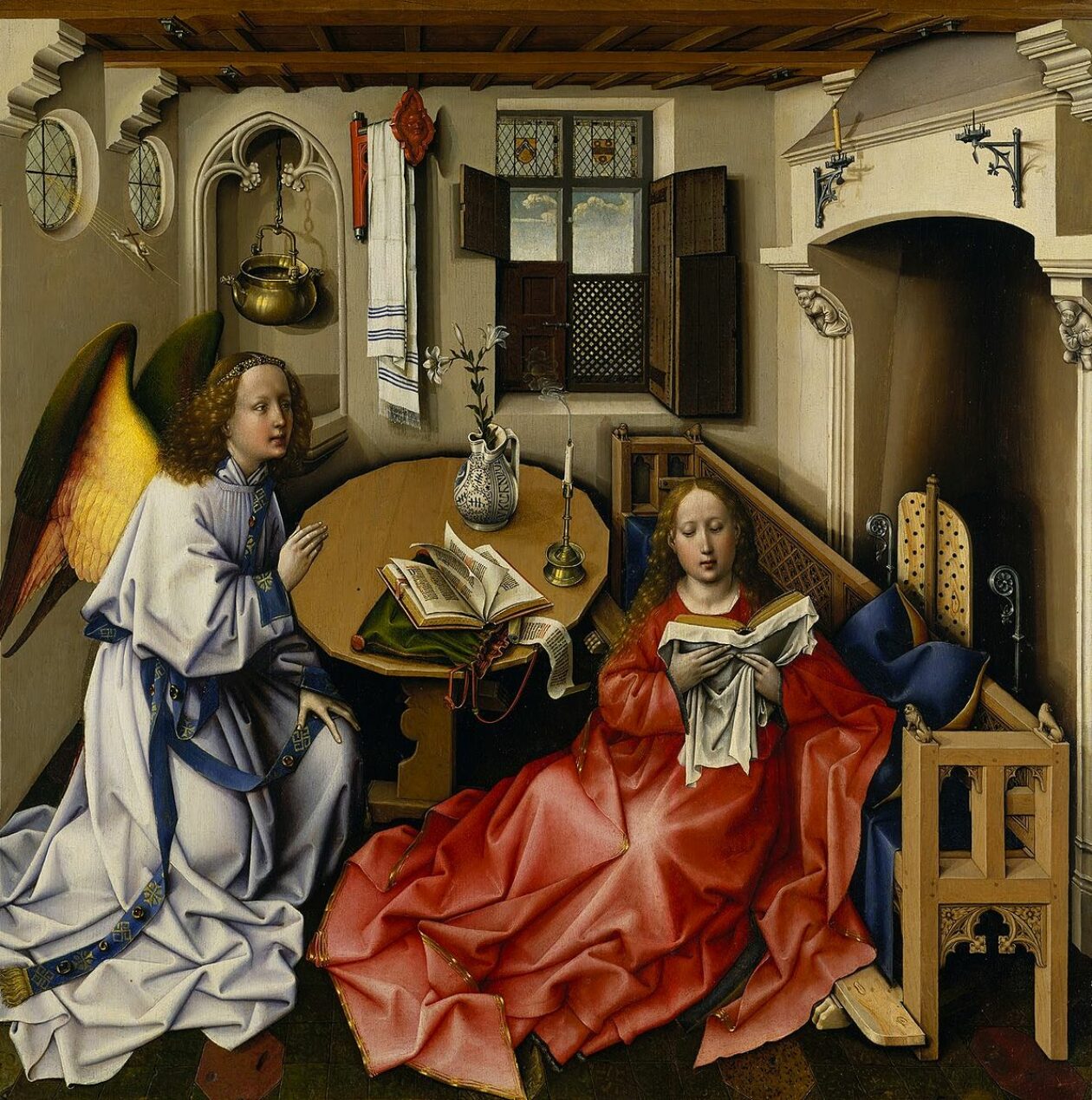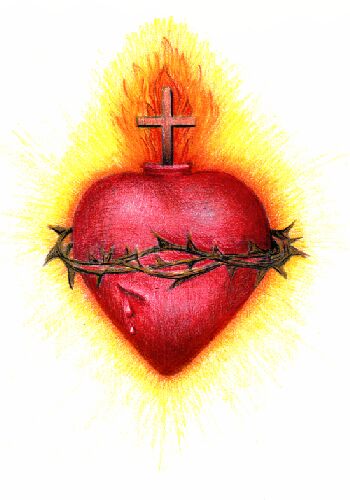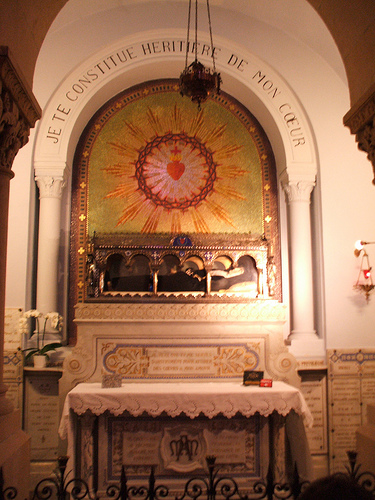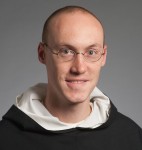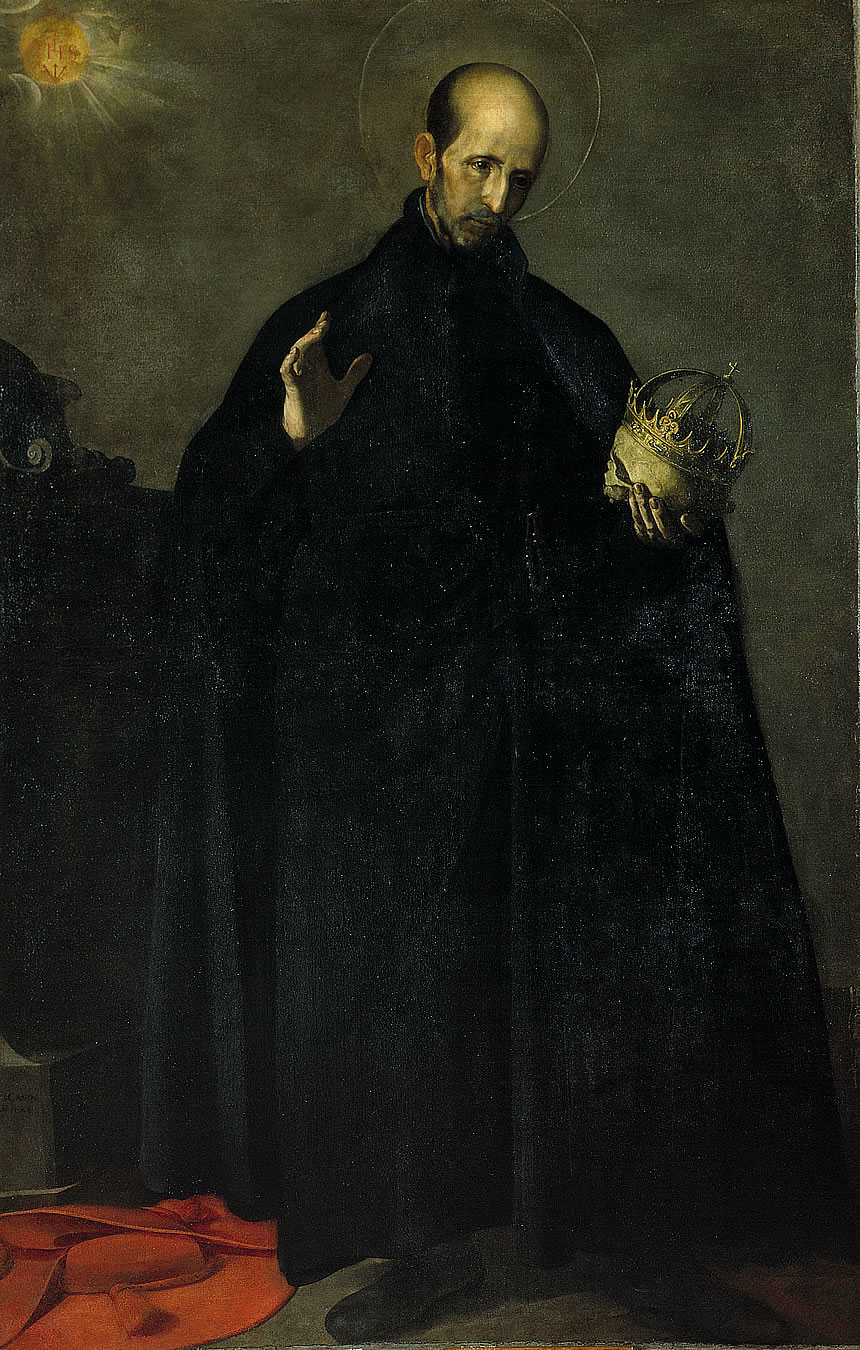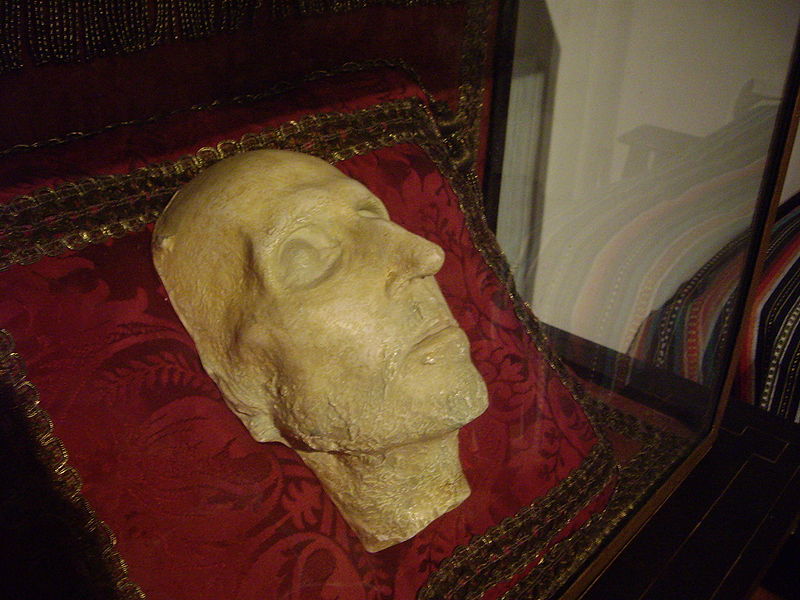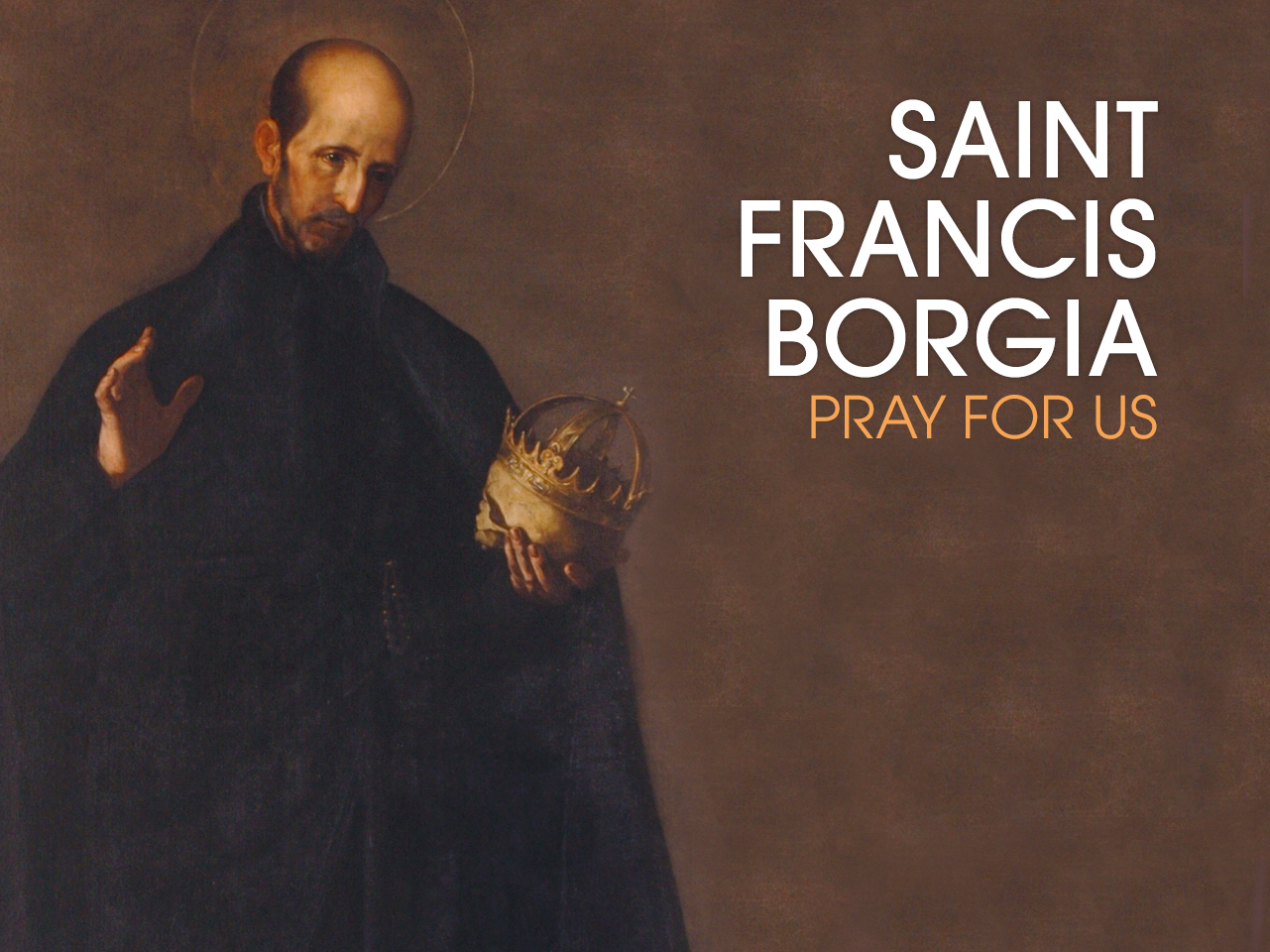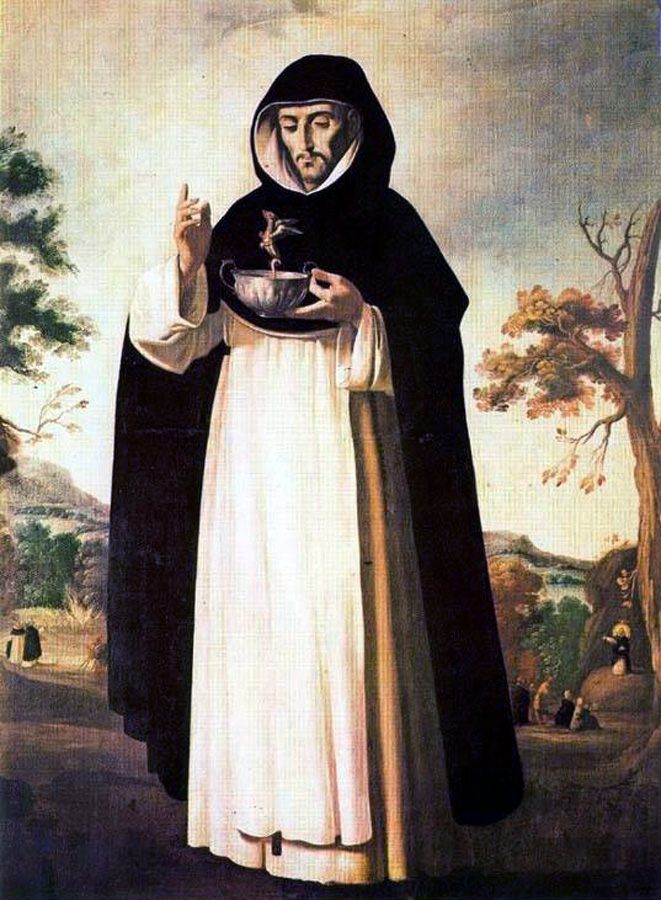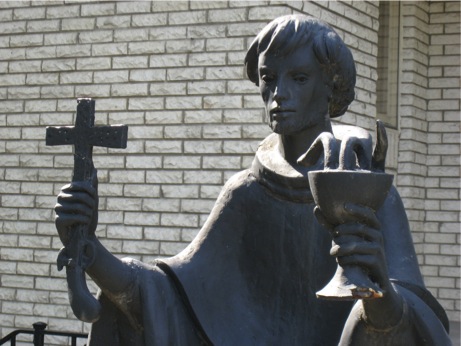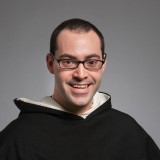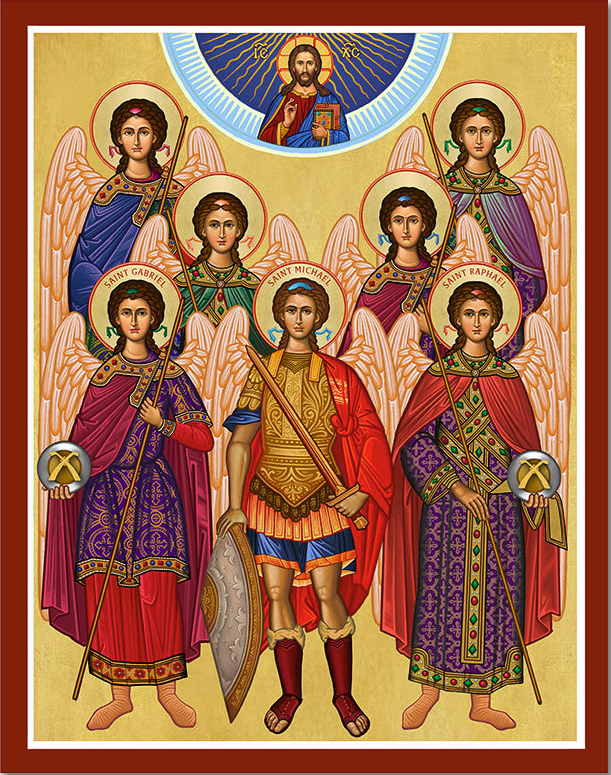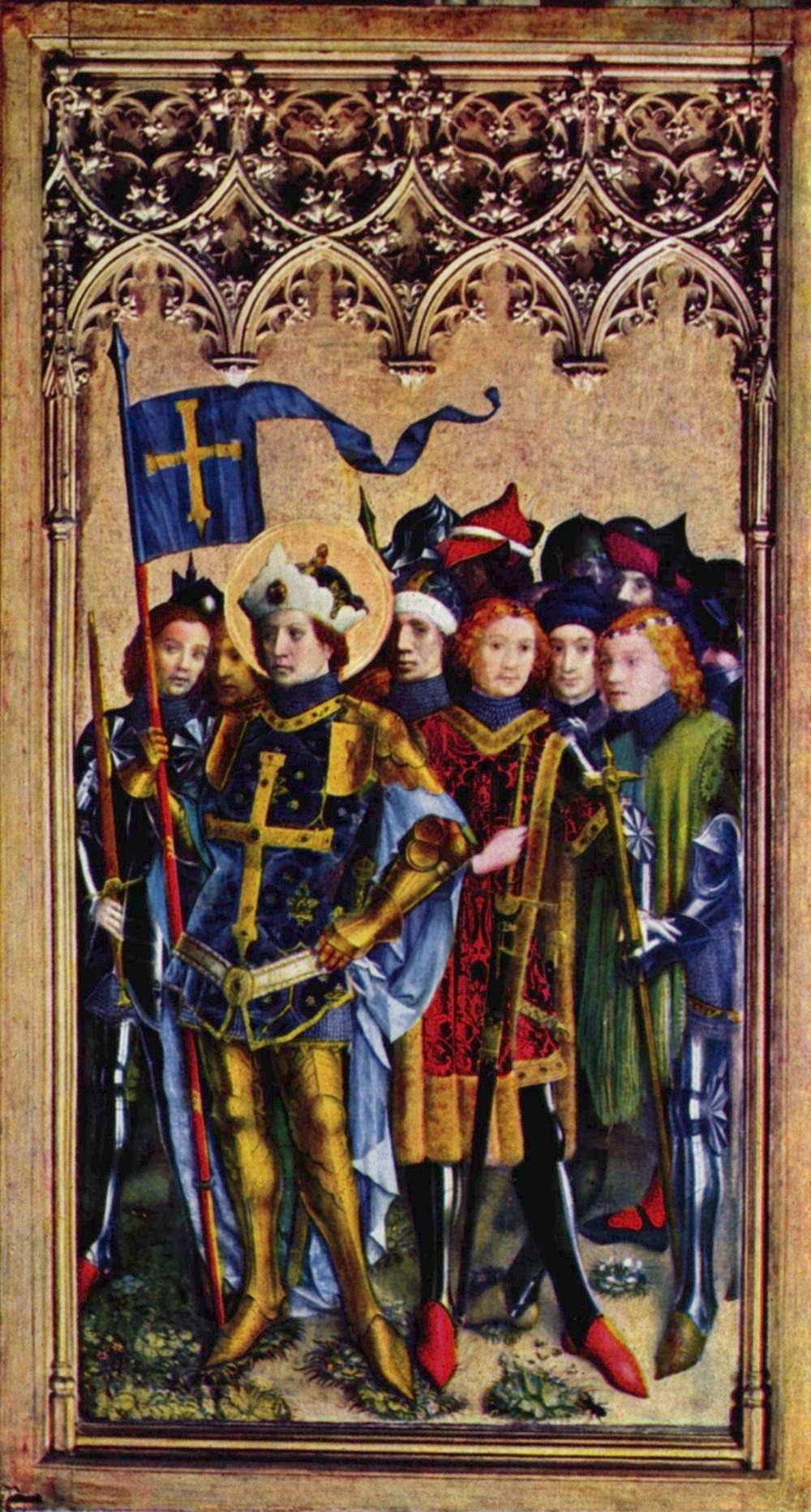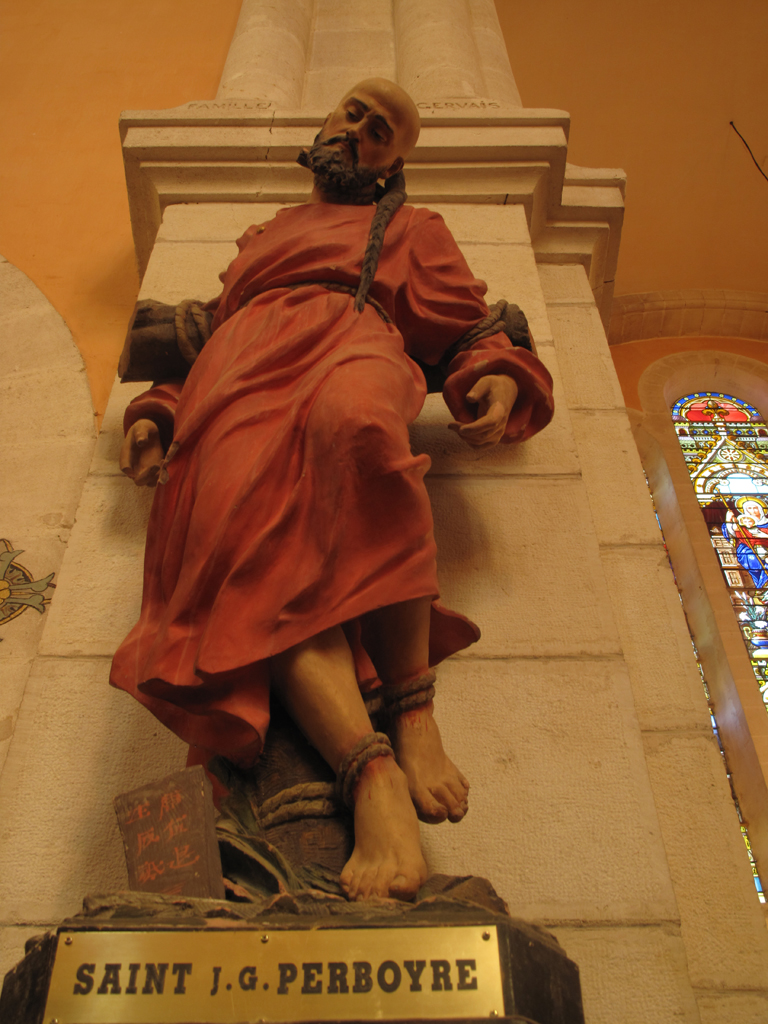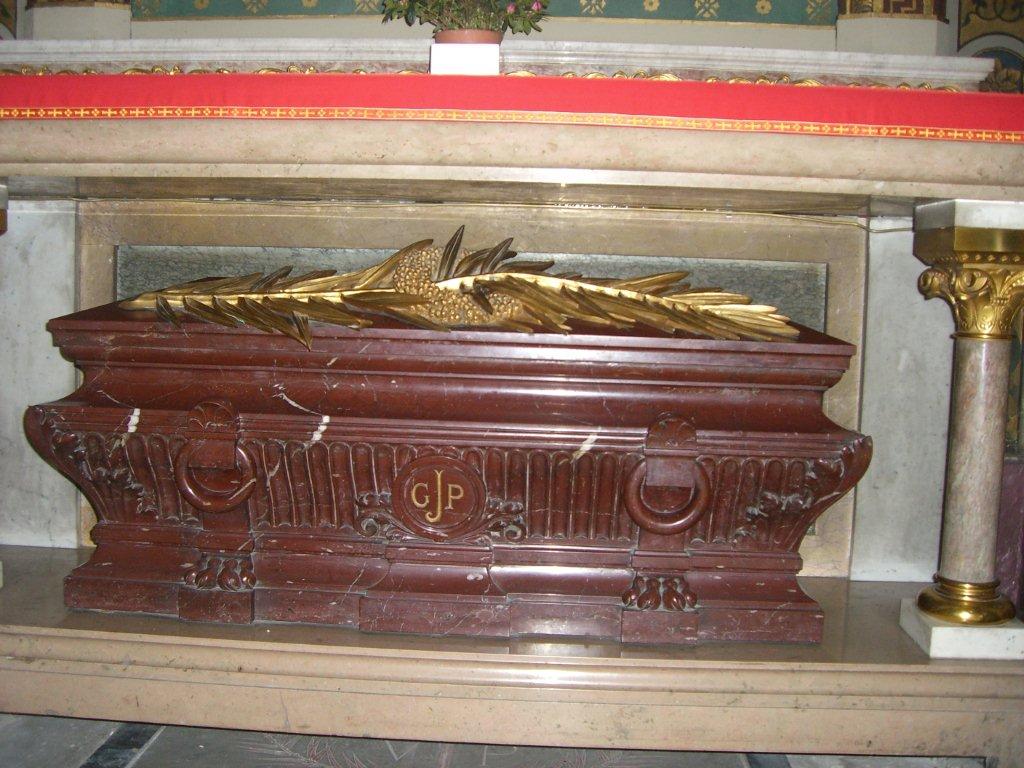My parents had a very special devotion to the Sacred Heart as I was growing up. Mara attends Sacred Hearts of Jesus & Mary School. We attend the parish in Sun Prairie, WI as well. My hope is that Mara will attend Edgewood High School of the Sacred Heart here in Madison, WI. Each night, at grace, my parents and I would add to the grace, “O Sacred Heart of Jesus, we place our trust in Thee!”: fifty-six years of marriage and six children.
Roman Catholics celebrate the life of St. Margaret Mary Alacoque, VHM, the French nun whose visions of Christ helped to spread devotion to the Sacred Heart throughout the Western Church.
Margaret Mary Alacoque was born in July of 1647. Her parents Claude and Philiberte lived modest but virtuous lives, while Margaret proved to be a serious child with a great focus on God. Claude died when Margaret was eight, and from age 9-13 she suffered a paralyzing illness. In addition to her father’s death as well as her illenss, a struggle over her family’s property made life difficult for Margaret and her mother for several years.
During her illness, Margaret made a vow to enter religious life. During adolescence, however, she changed her mind. For a period of time she lived a relatively ordinary life, enjoying the ordinary social functions of her day and considering the possibility of marriage.
However, her life changed in response to a vision she saw one night while returning from a dance, in which she saw Christ being scourged. Margaret believed she had betrayed Jesus, by pursuing the pleasures of the world rather than her religious vocation, and a the at the age of 22, she decided to enter a convent.
Two days after Christmas of 1673, Margaret experienced Christ’s presence in an extraordinary way while in prayer. She heard Christ explain that he desired to show his love for the human race in a special way, by encouraging devotion to “the Heart that so loved mankind.”
She experienced a subsequent series of private revelations regarding the gratitude due to Jesus on the part of humanity, and the means of responding through public and private devotion, but the superior of the convent dismissed this as a delusion.
This dismissal was a crushing disappointment, affecting the nun’s health so seriously that she nearly died. In 1674, however, the Jesuit priest Father Claude de la Colombiere, SJ, became Margaret’s spiritual director. He believed her testimony, and chronicled it in writing.
Fr. de la Colombiere, SJ, – later canonized as a saint – left the monastery to serve as a missionary in England. By the time he returned and died in 1681, Margaret had made peace with the apparent rejection of her experiences. Through St. Claude’s direction, she had reached a point of inner peace, no longer concerned with the hostility of others in her community.
In time, however, many who doubted her would become convinced as they pondered what St. Claude had written about the Sacred Heart. Eventually, her own writings and the accounts of her would face a rigorous examination by Church officials.
By the time that occurred, however, St. Margaret Mary Alacoque had already gained what she desired: “I need nothing but God, and to lose myself in the heart of Jesus.” She faced her last illness with courage, frequently praying the words of Psalm 73: “What have I in heaven, and what do I desire on earth, but Thee alone, O my God?”
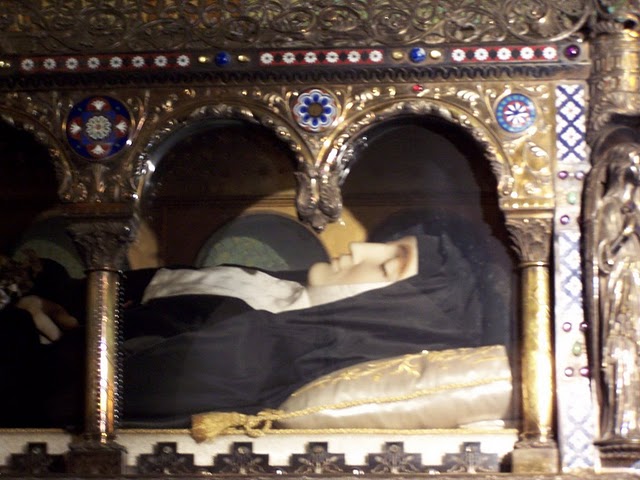
-tomb of St Margaret Mary Alacoque, VHM. Her remains were disinterred after burial for 140 years. What you see above is a waxified skeleton for veneration.
“Our Lord frequently told me that I should keep a secluded place for Him in my heart… where He would teach me to love Him” -St. Margaret Mary Alacoque
“It seems to me that the happiness of a soul consists entirely in conforming to the most adorable will of God; for in so doing the heart finds peace and the spirit joy and repose.” -St. Margaret Mary Alacoque
“My greatest happiness is to be before the Blessed Sacrament, where my heart is, as it were, in its center.” -St. Margaret Mary Alacoque
“But above all preserve peace of heart. This is more valuable than any treasure.” -St. Margaret Mary Alacoque
“Love keeps Him there [in the Blessed Sacrament] as a victim completely and perpetually delivered over to sacrifice for the glory of the Father and for our salvation. Unite yourself with Him, then, in all that you do. Refer everything to His glory. Set up your abode in this loving Heart of Jesus and you will there find lasting peace and the strength both to bring to fruition all the good desires He inspires in you, and to avoid every deliberate fault. Place in this Heart all your sufferings and difficulties. Everything that comes from the Sacred Heart is sweet. He changes everything into love.”
-St. Margaret Mary Alacoque, VHM
“The sacred heart of Christ is an inexhaustible fountain, and its sole desire is to pour Itself out into the hearts of the humble so as to free them and prepare them to lead lives according to His good pleasure.”
–St. Margaret Mary
“The crown will be given neither to beginners, nor to the advanced, but to the victorious, to those who persevere to the end.”
—St Margaret Mary Alacoque
“One just soul can obtain pardon for a thousand sinners.”
–St. Margaret Mary Alacoque
“Let every knee bend before Thee, O greatness of my God, so supremely humbled in the Sacred Host. May every heart love Thee, every spirit adore Thee and every will be subject to Thee!”
–St. Margaret Mary
“I have a burning thirst to be honored by men in the Blessed Sacrament, and I find hardly anyone who strives, according to My desire, to allay this thirst by making Me some return of love.”
– Words of Jesus to St. Margaret Mary
“The Divine Heart is an ocean full of all good things, wherein poor souls can cast all their needs; it is an ocean full of joy to drown all our sadness, an ocean of humility to drown our folly, an ocean of mercy to those in distress, an ocean of love in which to submerge our poverty.”
–St. Margaret Mary Alacoque
“Would that I could exhaust myself in acts of thanksgiving and gratitude towards this Divine Heart, for the great favor He shows us, in deigning to accept our help to make Him known, loved and honored; He reserves infinite blessings for all those who devote themselves to this work.”
–St. Margaret Mary Alacoque
“I desire but this one grace, and long to be consumed like a burning candle in His holy Presence every moment of the life that remains to me. For that I would be willing, I think, to suffer all the pains imaginable till judgment day, if only I should not have to leave His sacred presence. My only motive would be to be consumed in honoring Him and to acknowledge that burning love He shows us in this wonderful Sacrament. Here His love holds Him captive till the end of time. It is of this one can truly say, ‘Love triumphs, love enjoys, Love finds in God its joys.'”
– St. Margaret Mary
“My Divine Master revealed to me that it was His ardent desire to be known, loved and honored by men, and His eager desire to draw them back from the road to perdition, along which Satan is driving them in countless numbers, that induced Him to manifest His Heart to men with all the treasures of love, mercy, grace, sanctification and salvation that It contains.”
– St. Margaret Mary, July 2, 1674
In his encyclical on devotion to the Sacred Heart, Haurietis Aquas, May 15, 1956, Pope Pius XII wrote:
“… Christ Our Lord, exposing His Sacred Heart, wished in a quite extraordinary way to invite the minds of men to a contemplation of, and a devotion to, the mystery of God’s merciful love for the human race … Christ pointed to His Heart, with definite and repeated words, as the symbol by which men should be attracted to a knowledge and recognition of His love; and at the same time He established it as a sign or pledge of mercy and grace for the needs of the Church of our times.”
He further wrote: “The Church gives the highest form of worship to the Heart of the divine Redeemer.”
Love,
Matthew
